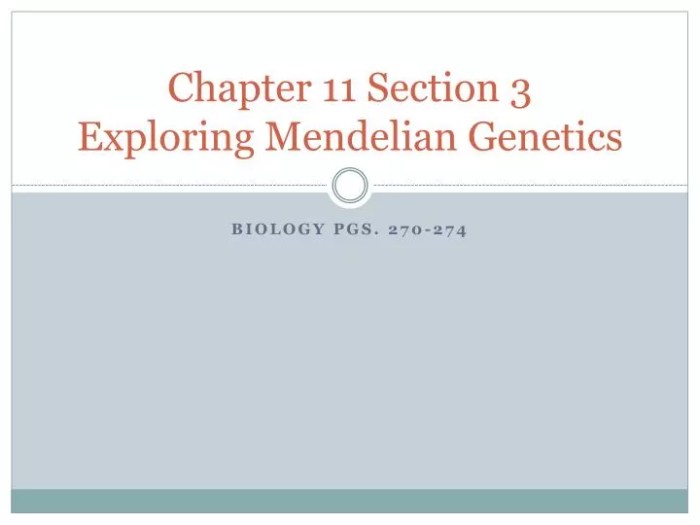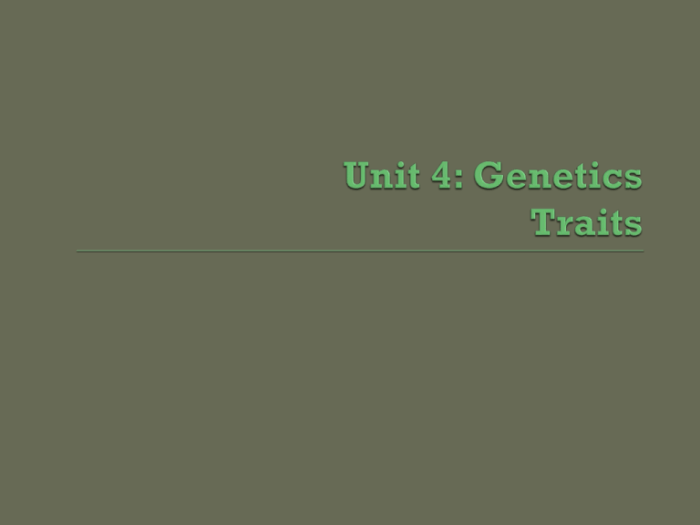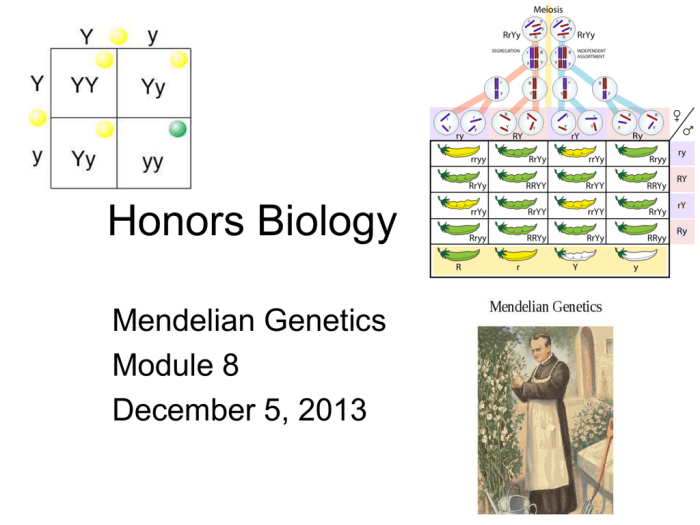Section 11 3 exploring mendelian genetics – Embarking on a journey through section 11.3: Exploring Mendelian Genetics, we delve into the fascinating world of inheritance patterns, revealing the fundamental principles that govern the transmission of genetic traits from one generation to the next. This section unravels the groundbreaking discoveries of Gregor Mendel, the father of genetics, and illuminates the profound impact of his laws on our understanding of heredity.
Delving into the intricate workings of Mendelian genetics, we will explore the concepts of dominant and recessive alleles, homozygous and heterozygous genotypes, and the diverse inheritance patterns they produce. Through the use of Punnett squares, we will uncover the secrets of predicting genetic outcomes, enabling us to comprehend the mechanisms behind the inheritance of traits.
Mendel’s Laws: Section 11 3 Exploring Mendelian Genetics

Mendel’s laws of inheritance, formulated by Gregor Mendel in the mid-19th century, provide the foundation for understanding the patterns of inheritance in living organisms. These laws describe the behavior of genes during the transmission of traits from parents to offspring.
Mendel’s Law of Segregation
Mendel’s Law of Segregation states that during gamete formation, the alleles for a given gene separate from each other, ensuring that each gamete carries only one allele for each gene. This process ensures that the offspring inherit one allele from each parent for every gene.
Mendel’s Law of Independent Assortment, Section 11 3 exploring mendelian genetics
Mendel’s Law of Independent Assortment states that the alleles of different genes assort independently of one another during gamete formation. This means that the inheritance of one gene does not influence the inheritance of another gene.
Query Resolution
What is the significance of Mendelian genetics?
Mendelian genetics laid the foundation for our understanding of inheritance patterns, providing the basis for modern genetics and its applications in agriculture, medicine, and evolutionary biology.
How do Punnett squares help us predict genetic outcomes?
Punnett squares are visual representations that allow us to determine the probability of inheriting specific alleles and genotypes, predicting the outcomes of genetic crosses.
What is the difference between dominant and recessive alleles?
Dominant alleles are expressed in individuals who inherit at least one copy of the allele, while recessive alleles are only expressed when inherited in homozygous pairs.


